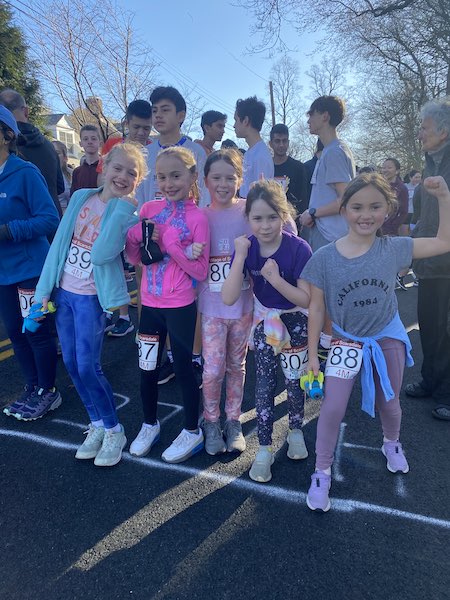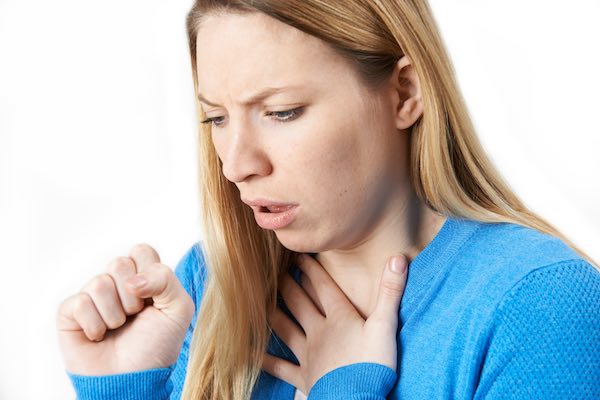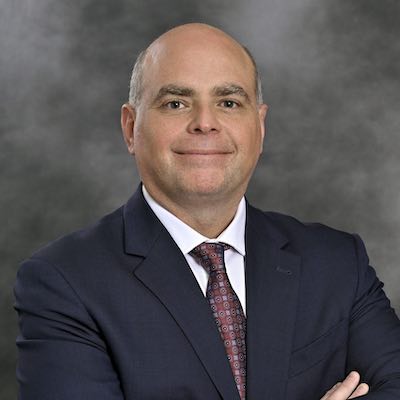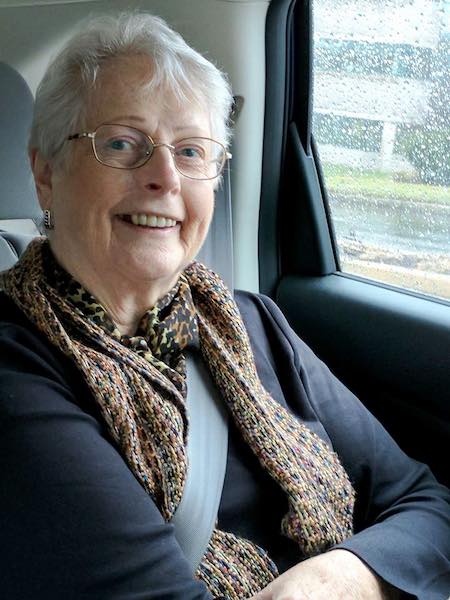Sign Up for the 54th Annual Scarsdale 15K and 4M Runs
- Details
- Written by: Joanne Wallenstein
- Category: Health
 The 54th Annual Scarsdale 15K & 4M Runs will take place on Sunday, April 7th. These are among the oldest road races in Westchester County and runners and walkers of all abilities are welcome! The races start and end at Scarsdale High School and route through the Fox Meadow and Greenacres neighborhoods. Visit here for course maps and registration.
The 54th Annual Scarsdale 15K & 4M Runs will take place on Sunday, April 7th. These are among the oldest road races in Westchester County and runners and walkers of all abilities are welcome! The races start and end at Scarsdale High School and route through the Fox Meadow and Greenacres neighborhoods. Visit here for course maps and registration.
Awards will be given to the top male and female finishers overall in both the 15K and 4M races, the top male and female Scarsdale finishers in the 15K race, and the top three male and female finishers in each age division for both races.
A virtual race option is available for those who would like to run the race on their own and have their finishing time displayed on the Results page of the website.
At around 8:30 am, the Scarsdale Police Department will restrict traffic through the Fox Meadow and Greenacres neighborhoods, though local access will be permitted.
A Growing Crisis: Treating Childhood Obesity
- Details
- Written by: Joanne Wallenstein
- Category: Health
 Childhood obesity is an alarming global concern that has been steadily worsening over the past few decades. The Centers for Disease Control and Prevention estimates 1 in 5 children and adolescents are affected by this condition. What’s more, the COVID-19 pandemic exacerbated the issue. “Post-COVID, obesity is especially on the rise in 6- to 11-year-olds and teens,” says Dr. Debra Etelson, a Pediatrician with White Plains Hospital Physician Associates in Somers.
Childhood obesity is an alarming global concern that has been steadily worsening over the past few decades. The Centers for Disease Control and Prevention estimates 1 in 5 children and adolescents are affected by this condition. What’s more, the COVID-19 pandemic exacerbated the issue. “Post-COVID, obesity is especially on the rise in 6- to 11-year-olds and teens,” says Dr. Debra Etelson, a Pediatrician with White Plains Hospital Physician Associates in Somers.
There are many reasons driving this increase. First, the pandemic disrupted organized sports and unstructured activities, including outdoor playtime for kids, compounding an already prevalent problem. Among her patients, Dr. Etelson says, “I noticed a decrease in outdoor play even before the pandemic.” But, during the COVID lockdown, she says, “More kids were sitting in bed with their laptops. Eating habits also changed; intake of processed foods increased. Some of this was from boredom, or a lack of distraction from other things going on.”
Mental health also suffered, she adds, which can lead to serious physical health consequences. “More depression and anxiety from isolation can also translate to more obesity,” Dr. Etelson says.
This trend also led to a rise in diseases associated with obesity, such as hypertension and kidney disease, says Dr. Frederick Kaskel, Vice Chair, Affiliate and Network Relations, The Children’s Hospital at Montefiore, and Professor of Pediatrics, Albert Einstein College of Medicine. Dr. Kaskel, a Pediatric Nephrologist who also sees patients at Montefiore’s Pediatric Specialty Center on Davis Avenue in White Plains, says this “common ground” of obesity, Type 2 diabetes, and hypertension tends to run in families. “And there are stressors — socioeconomic, geographic, demographic, and genetic” — that may exacerbate these problems, he explains.
“Many kids live in an environment where they can’t even go out to walk. They have only bad food choices and food anxiety. It becomes a vicious cycle.” But it is not just a problem for children in less-affluent areas, he says: “It’s across the board. We are in an epidemic. This is a global health issue.”
The consequences of a lack of physical activity are lifelong. “If children are severely obese by age 6, there is an even higher chance they will be obese in adulthood. Early childhood is the time to develop good habits,” says Dr. Etelson, who has conducted research on childhood obesity and has raised two children with Type 1 diabetes. While this is different from Type 2, she understands the challenges and the importance of maintaining a healthy diet and exercise routine.
To get young children on the path to wellness, it is important that their caregivers and families be part of healthy habit formation, including ensuring they get enough physical activity and eat healthy meals and snacks. (This includes grandparents, who might help with caregiving but offer too much junk food!)
“We need early identification and community awareness,” Dr. Kaskel says. “The earlier programs are set up, the better [the outcome] is going to be.” At the Pediatric Specialty Center, Dr. Kaskel’s team screens patients for risk and then works with other specialists in Endocrinology, Cardiology, General Pediatrics, and other specialties to enact lifestyle changes — which Dr. Kaskel admits are “very easy to talk about, but very hard to do.”
In her practice, Dr. Etelson strives to develop a “therapeutic alliance with parents and caregivers,” to manage weight in children. “I like to dig in deep and find out what’s realistic” in terms of lifestyle changes, she says. “We make it a collaborative approach and see what will work with the family and other caregivers.”
Scare tactics don’t work. “It’s about setting realistic goals,” she explains. “We are not expecting dramatic changes, but we want to see progress.” She also stresses the importance of setting up and maintaining follow-up appointments. “I want families to have accountability, as this is the only way to address challenges and increase health outcomes,” she says. Dr. Debra Etelson is a board-certified pediatrician at White Plains Hospital Physician Associates in Somers. To make an appointment, call 914-849-7075.
Dr. Debra Etelson is a board-certified pediatrician at White Plains Hospital Physician Associates in Somers. To make an appointment, call 914-849-7075.
Health Matters: The original version of this article was published in Health Matters, a White Plains Hospital publication.
Case of Whooping Cough Reported at Scarsdale High School
- Details
- Written by: Joanne Wallenstein
- Category: Health
 A case of whooping cough has been reported at Scarsdale High School. On February 1, the school alerted parents to look out for signs of Pertussis in their families as the persistent cough is known as the "cough of 100 days." Here is an email from Ken Bonamo, Principal of Scarsdale High School, telling you what you should know:
A case of whooping cough has been reported at Scarsdale High School. On February 1, the school alerted parents to look out for signs of Pertussis in their families as the persistent cough is known as the "cough of 100 days." Here is an email from Ken Bonamo, Principal of Scarsdale High School, telling you what you should know:
Please be advised that there has been a case of Pertussis at Scarsdale High School. Pertussis is a respiratory illness also known as "whooping cough." This a highly contagious bacterial disease that is spread through the air by cough from an infected individual. Children and adults may develop Pertussis even if they are up to date with their vaccinations, as immunity to Pertussis may lessen over time. Remaining up to date on vaccination against Pertussis, however, remains the best defense to prevent illness.
There are three stages of Pertussis infection:
Stage 1: Mild upper respiratory symptoms including low-grade fever, runny nose, sneezing, and mild, occasional cough.
Stage 2: Spasmodic coughing episodes, often at night, sometimes followed by long whooping sound and possible facial color changes or vomiting after coughing episodes. Does not appear ill between attacks.
Stage 3: Although the infection is not contagious after appropriate antibiotic treatment or 21 days from start of cough, coughing episodes may persist for weeks to months ("cough of 100 days").
Once a susceptible individual is exposed to Pertussis, it may take up to 21 days for symptoms to develop. If you observe these symptoms in your child/self, contact your health care provider and request a test for Pertussis with a special nasal-throat swab. This test is performed at either the doctor's office or hospital emergency room. Blood testing is not confirmatory for this disease. Early treatment with the appropriate antibiotic for a symptomatic individual will eliminate disease transmission and may reduce disease severity.
Antibiotic prophylaxis (preventive treatment) is recommended for high-risk asymptomatic contacts (not currently showing symptoms) including all household contacts, as well as any other close contacts who are infants, women in their third trimester of pregnancy, or immunocompromised persons at risk for severe disease. Pertussis disease is particularly dangerous to infants who are not fully immunized. Prophylaxis is not generally recommended for school contacts, but if you or your child fall into one of these high-risk categories and may have been in close contact with the ill student, please speak with your healthcare provider.
If your/ your child's health care provider suspects a diagnosis of Pertussis, orders testing and prescribes antibiotics, you/ your child should remain home until five days of the antibiotic has been completed.
For additional information on Pertussis, visit the Centers for Disease Control and Prevention website at www.cdc.gov. Parents or their physician may contact the Division of Disease Control at 914- 813- 5159 if they have any questions.
How Stress Can Affect Your Blood Pressure – And What You Can Do About It
- Details
- Written by: Joanne Wallenstein
- Category: Health
 Most if not all people feel stress in their lives, whether it’s at work, at home, or just getting from one place to another. Experiencing stress is a normal part of life; however, how we deal with it can make an important difference to our health.
Most if not all people feel stress in their lives, whether it’s at work, at home, or just getting from one place to another. Experiencing stress is a normal part of life; however, how we deal with it can make an important difference to our health.
Any time someone’s “fight or flight” instinct kicks in – a close call while driving; a sudden bark from a neighborhood dog – your blood pressure increases as stress hormones like adrenaline and cortisol are released by your brain.
Usually our blood pressure returns to its normal level after the event has passed. However, repeated stressful events – even relatively low-level ones – over time can have a negative effect on our health. The consequences of having chronic high blood pressure can include a higher risk for heart attack or stroke, risks that are made worse if you suffer from diabetes or live a sedentary lifestyle.
The answer to relieving high blood pressure (hypertension) caused by stress for many people is simple: remove the source of stress. This can of course be easier said than done, but there are a host of options that can help you relieve the effects of longer-term stress – and that may help lower your blood pressure.
Exercising on a regular basis is a great way of releasing endorphins, which can increase feelings of well-being and therefore relieve stress; I recommend 30 minutes of mild-to-moderate exercise at least five times a week. Consider the benefits of deep-breathing exercises, yoga and other self-relaxation techniques, which can have a long-term effect by providing you with the tools to overcome, or at least better manage, your stress.
If you face the same stressors each day – battling traffic during a long commute, for example – you may want to look into how to better manage your time. There may be a way to avoid peak commuting time by going to and from work a little earlier or later.
It should be noted that the “usual suspects” can also cause high blood pressure. Use of nicotine and alcohol, eating unhealthy foods, and (the not necessarily disconnected issue of) lack of good sleep can all play a role.
There are also many medications available for those with high blood pressure that can be helpful, depending on what your BP numbers are. If your blood pressure is consistently higher than 140/90, you will likely need to take medication. Even then, you should observe healthy habits to lower your risk for heart attack and stroke.
“Just relax” can itself be a stressful thing to hear. But it can be an effective way to combat hypertension, if you have the discipline and an approach that is right for you.
 Dr. Gregory Pontone is a noninvasive cardiologist and the Associate Medical Director of Ambulatory Quality and Physician Services at White Plains Hospital. To make an appointment, call 914-849-4800.
Dr. Gregory Pontone is a noninvasive cardiologist and the Associate Medical Director of Ambulatory Quality and Physician Services at White Plains Hospital. To make an appointment, call 914-849-4800.
Health Matters
The original version of this article was published in Health Matters, a White Plains Hospital publication.
Former Scarsdale Resident Nora Patricia Walsh Passes Away at Age 87
- Details
- Written by: Joanne Wallenstein
- Category: Health
 Nora Patricia WalshNora Patricia Walsh, 87, of Jenkintown, PA, died on January 19, 2024 surrounded by family.
Nora Patricia WalshNora Patricia Walsh, 87, of Jenkintown, PA, died on January 19, 2024 surrounded by family.
Nora was a fiercely dedicated and loving wife, mother, grandmother, sister, aunt, and friend. Her quick wit and occasionally piercing glance are legendary. She was kind, courteous, and thorough in whatever she did. She and her husband John raised their six children to be the same.
Nora loved travel, painting (viewing and doing), apple turnovers, cooking shows, BBC mysteries, Jeopardy, and MSNBC. But the thing she loved most was spending time with the people she loved. She was loyal; if you were in need, you wanted Nora on your team.
Nora was born in NYC to Patrick and Bridget (Shea) Dowd on New Year’s Eve 1936. She was preceded in death by John, her husband of 60 years, her parents, her sister Mary Leone and her brother-in-law Jim Walsh. Nora is survived by her children Aileen Schast (David), Christopher (Corinne), Kerry Walsh Skelly (Jerry), Maura, Meghan, and Tim (Kristine); her grandsons Christopher, James, Nicholas (Ashley), and Patrick (Alysha) Walsh; her granddaughter Julia Schast; her sister Kate (Jim) Brown; her brother John Dowd; her sister-in-law Kay Walsh; 13 nieces, nephews, and godchildren; three grand cats and two grand dogs.
A proud graduate of Mt. St. Ursula in the Bronx and then the Katherine Gibbs School, Nora worked at Cook-Waite Labs in NYC and then the Youth Guidance Center in Worcester, MA, before becoming a full-time mom. When John and Nora returned to NY in 1961, they first lived in Riverdale for 11 years and then in Scarsdale for 43 years. She later worked at the Junior League in Scarsdale, NY; the Hebrew Home for the Aged in Riverdale, NY; and regional offices of ABB and finally Bayer. Nora earned a B.A. summa cum laude from Fordham University in 1990. Nora and John moved to Rydal Park in Jenkintown, PA in late 2015.
Nora’s family wishes to thank the 3rd floor staff at Rydal Park Medical Center and John Silwa and the care team from Bayada Hospice for their kind and gentle care for Nora over these past weeks.
There will be a Memorial Mass at Immaculate Conception Church at 606 West Avenue in Jenkintown, PA on Friday, February 16 at 11:30 am. In lieu of flowers, memorial donations to St. Jude’s Children’s Hospital, Shriners Hospitals for Children, Special Olympics or Catholic Relief Services would be appreciated.










